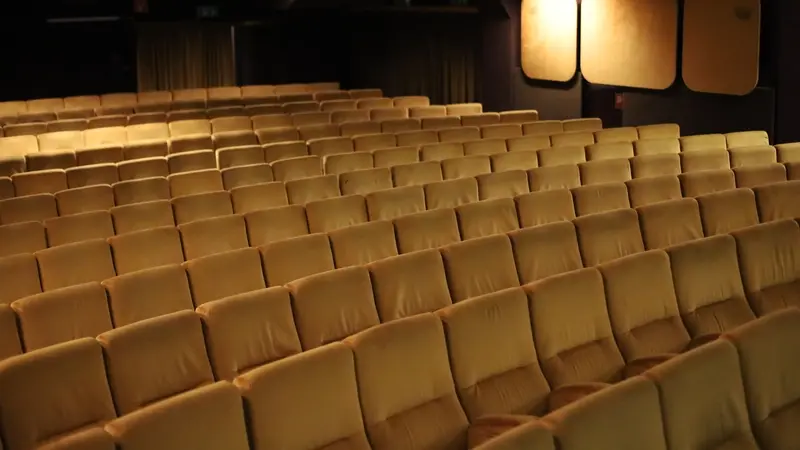 Independent local businesses in Paris Street
Independent local businesses in Paris Street
In July this year Exeter Observer reported on the successful opening of a new community arts project in the Sidwell Street building that used to contain clothing chain Peacocks, which we juxtaposed with the uncertainty presented by development plans which threaten the futures of all of the short-lease tenants in the area.
Artists’ collective Maketank has transformed what was a three-storey furniture store building on Paris Street into a creative, rehearsal and performance space and The Sidwell Street Bakehouse trains volunteers in craft bread baking and sells high-quality loaves in what was a branch of Halfords.
Independent retailers including houseplant specialist Hutch, the Cuckoo taproom and bottleshop and Kids Hub Coffee, a cafe with children’s play area, have also set up shop on Paris Street, where homeless charity St Petrock’s is opening a new pop-up hub tomorrow.
This unplanned renaissance in the city’s East Gate area is being driven by short-lease tenants in the shadow of council plans to redevelop the area bounded by Paris Street, Sidwell Street, Cheeke Street and the old bus station that are known as the Citypoint scheme.
 2018 Citypoint development scheme drawing
2018 Citypoint development scheme drawing
Citypoint was conceived as a response to the September 2017 failure of private/public sector plans for a new leisure complex, bus station and mixed retail and food development on the site extending down to the Western Way roundabout at the foot of Heavitree Road.
The original scheme was presented as an extension of the existing Princesshay shopping centre across Paris Street, which was to be closed to motor traffic as part of the redevelopment.
When The Crown Estate suddenly pulled out, citing unfavourable market conditions, the contractor which was expected to deliver the public sector works also declined to proceed.
Exeter City Council found another contractor and continued with the leisure complex - now St Sidwell’s Point - and the new bus station, financing both itself. The final bill for the work is awaited, but expected to be in excess of £52 million.
In preparation for the demolition of the buildings on the south side of Sidwell Street and the east side of Paris Street, The Crown Estate, which owns the buildings, began terminating leases or offering short-term replacements. Several businesses decided to relocate.
At the same time, ideas for the remainder of the original development site were commissioned from Jones Lang Lasalle, the firm which presented the controversial redevelopment proposals for Harlequins shopping centre last year.
It proposed a mix of private sector build to rent and open market housing, a “civic hub” to which the council would relocate, offices and flexible workspaces, retail and food outlets and two hotels.
Councillors approved the proposals in December 2018 as the basis for drawing up development plans.
However progress since has been slow, with the hiatus prompting a range of independent local businesses, many with an artistic or cultural bent, to move into the vacant units, opting to trade low rents for the uncertainty of leases which can be terminated at short notice.
Paris Street & Sidwell Street tenants at October 2021
| Business type | Paris Street | Sidwell Street |
|---|---|---|
| Independent local | 10 | 5 |
| Chain/franchise | 0 | 7 |
| Charity | 2 | 1 |
| Other | 1 | 0 |
| Vacant units | 1 | 3 |
Seven Paris Street and four Sidwell Street units are occupied by (broadly-defined) arts and culture organisations.
The council was asked at a meeting in September to provide a progress report on the Citypoint development.
Council leader Phil Bialyk said: “The Memorandum of Agreement with the principal landholders has been provisionally agreed. [It] provides for both a long term ownership structure of the site and for the joint promotion of opportunities as they arise.
“This will enable the council and/or the principal landowners to select development partners or deliver elements of the scheme themselves.
“We are currently in talks with both the Government Property Agency and the university regarding their joining with us to deliver the first phase of development, this being the Exeter Civic Hub, where the city council and public sector partners can create a vibrant city core, anchoring activity in the city centre and contributing to its continued resilience.”
Indeed, the Liveable Exeter Place Board approved the development of a business case for a city centre “innovation district” for potential inclusion in the Citypoint redevelopment in March this year, although its decision has yet to appear on a city council meeting agenda.
In July, when the council announced it had given financial support to Positive Light Projects, Amal Ghusain, lead councillor for culture and communities, said that the project “could be the spark for other artistic and cultural initiatives to follow and take root”.
When asked for assurance that her statement would be factored into future site development planning, the council leader endorsed her ambition as “absolutely correct”.
He also said that developing the civic hub on the open space beside the old bus station (the site of the Bampfylde Street car park) was the first priority, and that it would be “some years” before anything happened on the sites of the repurposed Paris Street and Sidwell Street retail units.
Even more encouragingly, Councillor Bialyk said that the council “will want to work with whoever our partners are at the appropriate time to accommodate all those people who are currently there should they wish to remain. That is what we would want to do.”
 Exeter Civic Centre on Paris Street:
Exeter Civic Centre on Paris Street:
Construction of a new civic hub would allow the council to vacate (and redevelop) its current offices
Councillor Bialyk’s cautious approach to further phases of the redevelopment may well be sensible, given the genesis of the proposals.
First, the proposed scheme was presented to councillors in December 2018, before the coronavirus pandemic changed working and shopping patterns. What seemed viable then may be less so now, and still less in future.
Second, the council will be aware of The Crown Estate’s past form in pulling out of a redevelopment project at the last minute, as it did in September 2017.
Third, the site is within an nationally designated Area of Archaeological Importance. The designation aims to prevent important archaeological sites from being damaged or destroyed without at least allowing for some investigation and recording, which can cause delay and extra costs. The excavations for the new bus station confirmed that the area is rich in Roman remains.
Finally, there is growing awareness of the carbon cost of demolition and redevelopment. The Royal Institute of Chartered Surveyors calculated in 2017 that embodied emissions can constitute up to 75% of a building’s total carbon emissions over its lifespan, and the Architects’ Climate Action Network launched a campaign this year for embodied emissions to be regulated through changes to planning policy and building regulations.
Since then the 2021 Pritzker Architecture Prize, the profession’s highest accolade, has been awarded to French architects Lacaton & Vassal, whose professional motto is: “Never demolish, never remove or replace, always add, transform and reuse”.
 Positive Light Projects photography studio under construction:
Positive Light Projects photography studio under construction:
Converting space to new uses need not be difficult or expensive
We asked both the council and The Crown Estate if they would consider site redevelopment options which involved retaining the existing buildings.
The council said there was nothing to add to Councillor Bialyk’s September statement.
The Crown Estate said: “As owners of Princesshay, we want to ensure Exeter is a welcoming and exciting place to live and visit. We continue to work closely with the council on how we can enhance our offer at Princesshay, and the surrounding area, and ways we can work with those in the community to help meet local needs.”
Neither the council nor The Crown Estate has so far made an explicit commitment to demolition, so – at least hypothetically – the option of refurbishing the existing buildings remains open.
Such an approach is demonstrably achievable. As Positive Light Projects has shown, it is perfectly possible to transform vacated East Gate buildings into a range of spaces with flexible uses over several floors, and to do so at low cost (albeit with plenty of volunteer labour).
The design of many of the existing buildings, particularly in Paris Street, makes them already fit for this purpose.
And while the existing Paris Street and Sidwell Street frontages may not conform with the council’s vision of brand new architect-designed glass-fronted monoliths, a series of modest improvements to their facades, as well as their surroundings, could well create the “liveable” environment the council is so keen to promote.
 The west end of Sidwell Street has few trees:
The west end of Sidwell Street has few trees:
Denser planting could transform public realm by softening architectural impacts
These improvements could include planting many more trees on what are broad pavements - and even down the middle of both roads to create two carriageways, making superficial external changes to building facades - employing new surfaces and colour schemes, and enforcing existing motor traffic regulations - in particular to ensure the west end of Sidwell Street is used only by buses and taxis.
These are among many options in routine use in other towns and cities around the country.
The council could do worse than engage the city’s creative and artistic communities, many of which are driving the East Gate area renaissance, to help it develop ideas for what would be low cost, low carbon interventions to help Paris Street and Sidwell Street grow.
Then the council could deliver its leader’s vision without needing the enormous capital investment that will otherwise be required to demolish and replace the existing buildings with a wall of concrete, glass and steel.










